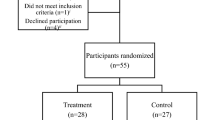Abstract
Cervical cancer is a preventable disease. Precancers can be identified and treated through cervical screenings. The HPV vaccine prevents precancers from becoming cancers. The aim of the A Su Salud Cervical Cancer Prevention Program was to apply well-understood health promotion techniques and increase the rate of cervical cancer screening among a high-risk, multiethnic, low-income population in South Texas. Qualitative research was used to identify uptake barriers and tailor media messaging. Using existing resources, we applied evidence-based strategies in novel ways that changed personal behaviors, leading to cancer screening, risk reduction, and early detection. We created a database to track a cohort of 32,807 women and measured cervical cancer screenings over 3 years. Our analysis revealed an increase in cervical cancer screenings after use of highly targeted automated telephone reminders and media dissemination on multiple platforms. Those women at low risk for cervical cancer obtained the highest proportion of Pap tests. This innovative, theory-based program increased overall Pap tests up to 9 % among women enrolled in a safety net hospital financial assistance plan. This study fills a gap in research on Pap test compliance in uninsured, mostly Hispanic women by building on cultural strengths and tailored messaging.

Similar content being viewed by others
References
American Cancer Society (2006) Cancer facts & figures for Hispanics/Latinos. American Cancer Society, Inc., Atlanta
American Cancer Society High Plains Division, Inc (2008) Texas facts & figures 2008. American Cancer Society, Austin
Bandura A (1986) Social foundations of thought and action : a social cognitive theory. Prentice-Hall series in social learning theory. Prentice-Hall, Englewood Cliffs
Braveman P (2006) Health disparities and health equity: concepts and measurement. Annu Rev Public Health 27:167–194
Center for Health Statistics (2012) Risk factor: no pap smear within 3 years, women >= 18 years. In Texas behavioral risk factor surveillance system survey data. Austin, Texas: Texas Department of State Health Services
Centers for Disease Control and Prevention (2010) HPV-associated cervical cancer rates by race and ethnicity. In Human papillomavirus (HPV)-associated cancers. Atlanta: Centers for Disease Control and Prevention
Centers for Disease Control and Prevention (2010) Women aged 18+ who have had a pap test within the past three years. In Prevalence and trends data, ed. Behavioral Risk Factor Surveillance System.
Clegg L, Reichman M, Miller B, Hankey B, Singh G, Lin Y, Goodman M et al (2009) Impact of socioeconomic status on cancer incidence and stage at diagnosis: selected findings from the surveillance, epidemiology, and end results. National longitudinal mortality study. Cancer Causes Control 20:417–435
Deaton A (2002) Policy implications of the gradient of health and wealth. Health Aff 21:13–30
DeVries H, Brug J (1999) Computer tailored interventions motivating people to adopt health promotion behaviors. Patient Educ Couns 36:99–105
Fronstin P (2006) Workers’ health insurance: trends, issues, and options to expand coverage. Employee Benefit Research Institute, Washington
Gaziano C, Horowitz AM (2001) Knowledge gap on cervical, colorectal cancer exists among U.S. women. NRJ 22:12–27
Glanz K, Rimer B, Lewis F (2002) Health behavior and health education: theory, research, and practice. Jossey-Bass, San Francisco
Glanz KL, Frances Marcus Rimer Barbara K (1990) Health behavior and health education: theory, research, and practice. The Jossey-Bass health series. Jossey-Bass, San Francisco
Livingston G, Munushkin S, Cohn D (2008) Hispanic and healthcare in the US: access, information and knowledge. Pew Hispanic Center and Robert Wood Johnson Foundation, Washington, DC
McAlister A (1995) Behavioral journalism: Beyond the marketing model for health communication. Am J Health Promot 9(6):417–420
Passel J, D’Vera C (2008) U.S. population projections: 2005–2050. In Pew Hispanic Center. Washington: Pew Research Center
Prochaska JO, DiClemente CC (2005) The transtheoretical approach. In: Goldfried MR (ed) Handbook of psychotherapy integration. Oxford University Press, New York, pp 147–171
Ramirez AG, McAlister A (1995) Community level cancer control in a Texas barrio: Theoretical basis and implementation. J Nat Cancer Inst 8:117–122
Ribisl KM, Winkleby MA, Fortmann SP, Flora JA (1998) The interplay of socioeconomic status and ethnicity on Hispanic and white men’s cardiovascular disease risk and health communication patterns. Health Educ Res 13:407–417
Roux AVD, Merkin SS, Arnett D, Chambless L, Massing M, Nieto FJ, Sorlie P, Szklo M, Tyroler HA, Watson RL (2001) Neighborhood of residence and incidence of coronary heart disease. N Engl J Med 345:99–106
Texas Department of State Health Services (2006) Texas cervical cancer strategic plan. Texas Department of State Health Services in collaboration with The Texas Cancer Council, Austin
U.S. Bureau of the Census, Population Division (1996) Texas’ population projections: 1995 to 2025. U.S. Bureau of the Census, Atlanta
Viswanath K, Breen N, Meissner H, Moser RP, Hesse B, Steele WR, Rakowski W (2006) Cancer knowledge and disparities in the information age. J Health Commun 11:1–17
Author information
Authors and Affiliations
Corresponding author
Rights and permissions
About this article
Cite this article
Fornos, L.B., Urbansky, K.A. & Villarreal, R. Increasing Cervical Cancer Screening for a Multiethnic Population of Women in South Texas. J Canc Educ 29, 62–68 (2014). https://doi.org/10.1007/s13187-013-0544-3
Published:
Issue Date:
DOI: https://doi.org/10.1007/s13187-013-0544-3




